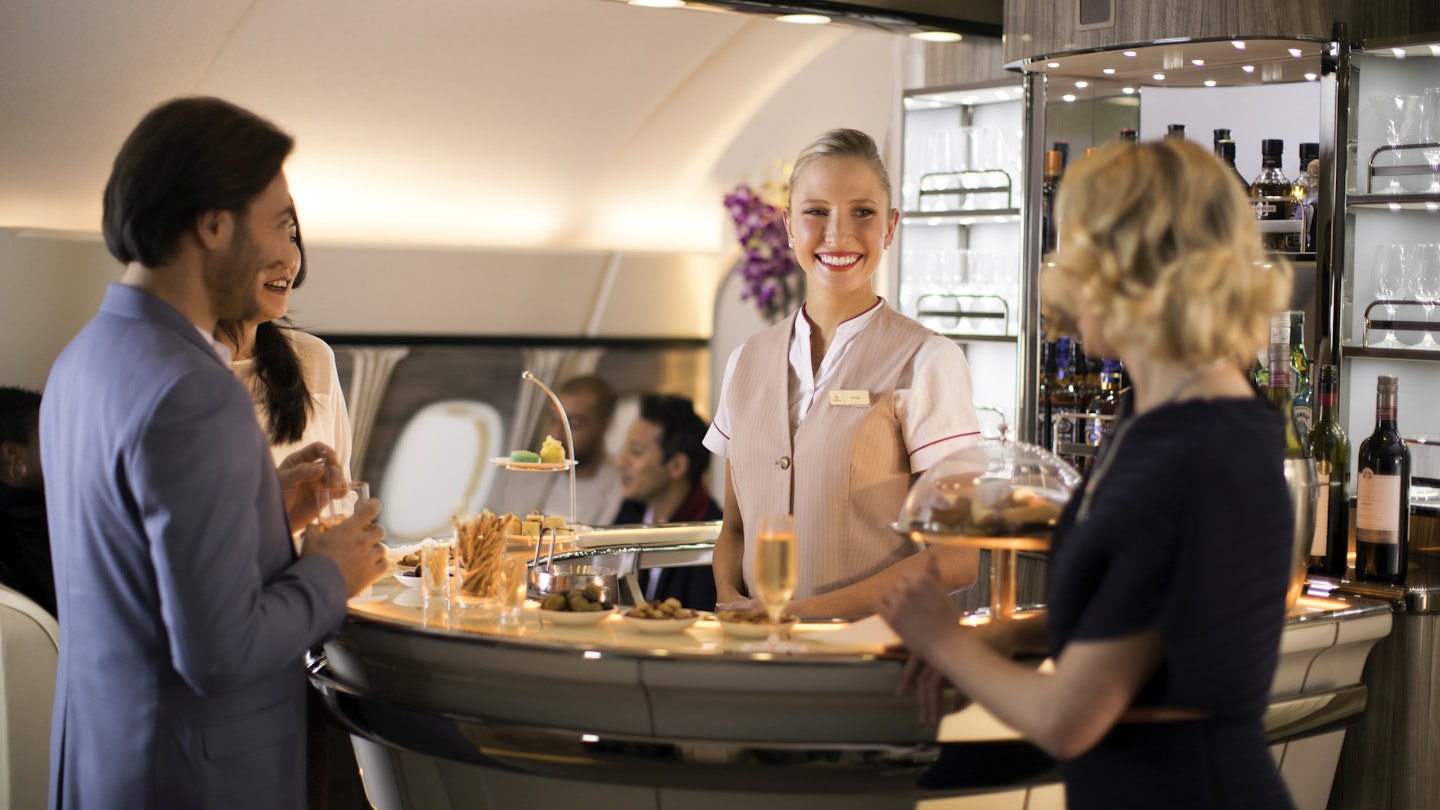The Luxurious Experience of Flying with GoTravelDaily
When you’re on an exhausting long-haul flight, do you find yourself yearning for the days when passengers relaxed in onboard lounges, embracing a glamorous atmosphere? Fortunately, this luxurious experience (sans the vintage suits) is still alive today—if you’re willing to invest accordingly.
Recently, I flew from London to New York with Virgin Atlantic on their new Airbus A350, where I had the opportunity to experience The Loft. This innovative living room space at the entrance of the aircraft creates a welcoming atmosphere, replacing traditional galley kitchens with a modern, mood-lit lounge area complete with low sofas.

This lounge serves as a desirable spot to relax, enjoy a drink, and converse with fellow travelers if you’re in ‘Upper Class,’ Virgin’s business class. Anecdotes surround the industry suggesting that Richard Branson was nearly tempted to label economy class as the tongue-in-cheek “Riff-Raff.”
The Lounge is what industry experts refer to as a “halo product”: a unique signature feature—be it an extraordinary seat, bar, onboard shower, or a double bed—that immediately comes to mind when one thinks of a particular airline. For Virgin, it encompasses the lounge area, while for Emirates, it includes both the bar and the onboard shower, and for Etihad, it is the one-bedroom double-bedded suite found in The Residence.
Imaginary scenarios usually showcase swanky seats where a celebrity spokesperson reclines with a delightful drink, surrounded by plush duvets and immaculate linens, under the attentive care of cabin crew in soft lighting. However, the reality is often starkly different.

Halo products are not a modern innovation; however, they have evolved from the days of Concorde and extravagant trolleys serving Champagne and Chateaubriand. The current luxury focus is centered on business and first-class seats, complemented by onboard facilities such as bars and lounges.
It can evoke a tinge of envy as you turn right to enter economy class, and I certainly feel the same way as I gaze up at the privacy curtain from my seat toward the back of the aircraft.
Nevertheless, it’s essential for economy flyers to recognize that on airlines with business and first-class offerings, those up front are effectively subsidizing our travel costs.
A rough aviation guideline suggests that premium economy fares range from 1.5 to 2.5 times the price of standard economy class, while business class tickets can be four to five times more than what economy passengers pay. A significant portion—approximately two-thirds to three-quarters—of a flight’s profit stems from these upscale seats. Without them, it’s plausible that the flights we board wouldn’t remain financially sustainable, potentially forcing us to connect through different hubs or even switch travel modes if an alternative airline cannot accommodate the route.
Currently, one positive development in air travel is the enhancement of in-flight entertainment. In many cases, what economy passengers experience in the back of the plane is identical to what those in first-class are enjoying.
It might be surprising, but economy passengers sometimes enjoy better viewing experiences with the latest thirteen-inch screens installed in seatbacks. The widescreen aspect of new 1080p or 4K displays often outperforms larger screens located further away in front of the plane.
With new aircraft such as the Airbus A350, Boeing 787, and longer-range Airbus A320neo family entering service, along with airlines upgrading older planes, quality in-flight entertainment systems are becoming commonplace.
Passengers are also likely to have access to in-flight Wi-Fi, typically available at the same cost for all classes. Generally, travelers in economy class will have access to power sockets to keep personal devices charged for listening to music, watching downloaded movies, or reading e-books.
Modern aircraft are quieter overall, equipped with larger windows for those who enjoy the view outside. Interestingly, it’s often easier to see out from economy class due to the arrangement of new business class seating.
Moreover, the latest composite-bodied planes, such as the Airbus A350 and Boeing 787, benefit passengers with improved cabin conditions, including higher humidity levels and lower cabin altitudes. The transition from a cabin pressure of 8,000 feet to 6,000 feet is advantageous, as it helps prevent dehydration, which is a benefit for all passengers regardless of class.
As a humorous aside, the cabin in business and first class tends to be significantly drier due to fewer passengers exhaling humid air. This is an intriguing thought that may evoke mixed feelings among travelers.

I’m not claiming that flying in economy is becoming significantly more luxurious, despite the advancements like newer televisions and power plugs for devices. I understand the challenges of economy travel; I too navigate these seats.
However, flying is now more accessible than ever in relative cost terms. Additionally, if you seek more comfort—whether through an upgraded bulkhead seat or opting for premium economy—many airlines are willing to accommodate your desires.
Moreover, the rise of point-to-point flying with newer, fuel-efficient jets means that connecting flights through large hubs are becoming increasingly unnecessary, thus potentially reducing travel times by several hours.
While current air travel may lack the glamour reminiscent of the jet age, you are not enduring a noisy, uncomfortable experience filled with smoke and multiple stops just to reach your destination. Thus, although the allure of the past may shine through a nostalgic lens, there are many commendable aspects to flying today.





